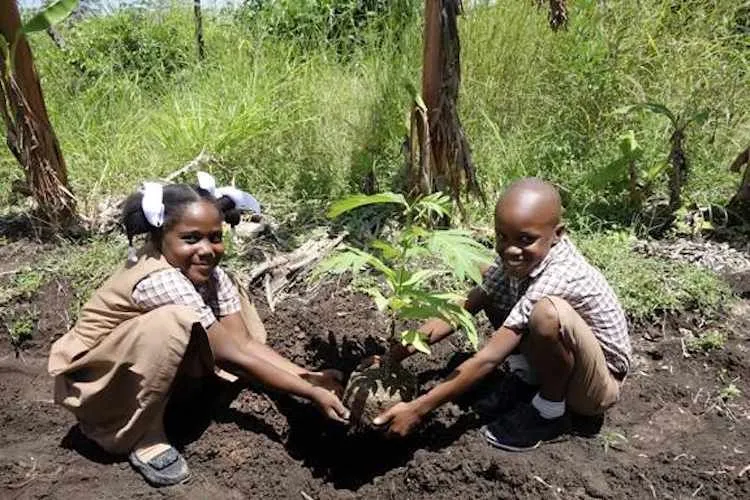“Everything was changed. Even the air. Instead of the harsh dry winds that used to attack me, a gentle breeze was blowing, laden with scents. A sound like water came from the mountains: it was the wind in the forest.” – Jean Giono, The Man Who Planted Trees (L’homme qui plaintait des arbres)
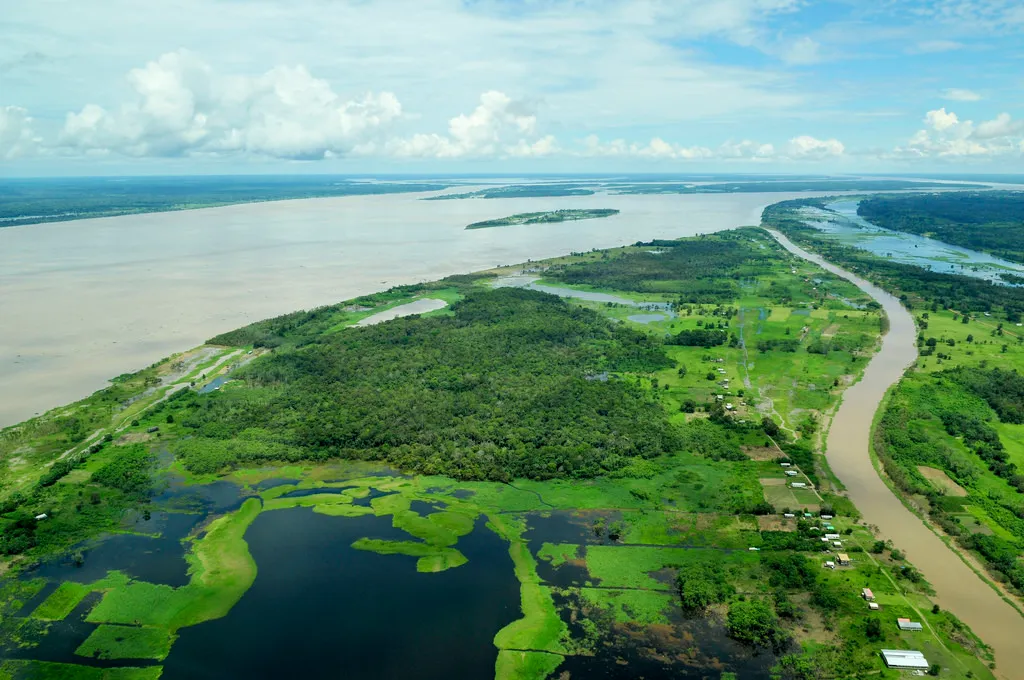
Amazon River near Manaus. Creative Commons via Flickr by Neil Palmer (CIAT).
We’ve heard that the world’s forests are disappearing; the earth is going bald. In the last 20 years, an area the size of two Germanys has been logged out of the Amazon rainforest. At current rates, that rainforest may be gone in 100 years. Much of the cleared land is used for grazing cattle and growing soybeans.
Illegal mining is also a problem; the two images here show "before" and "after pictures" of the impact of a mining operation. The first image was taken in October 2015 and the second one in October 2017. These are courtesy of the Amazon Conservation organization's Monitoring of the Andean Amazon project. http://maaproject.org/
October 2015
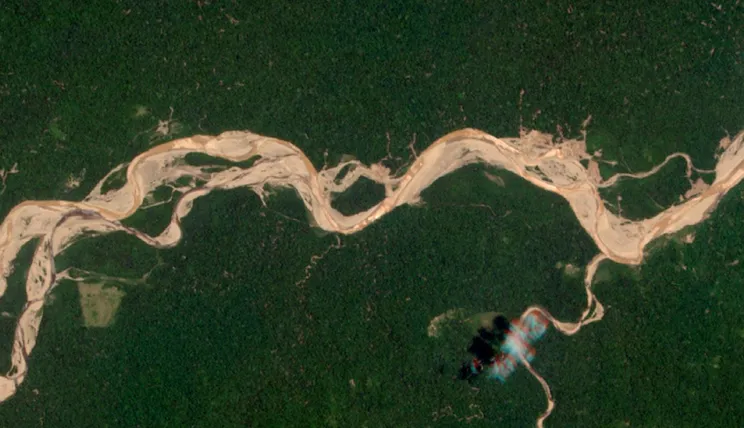
October 2017
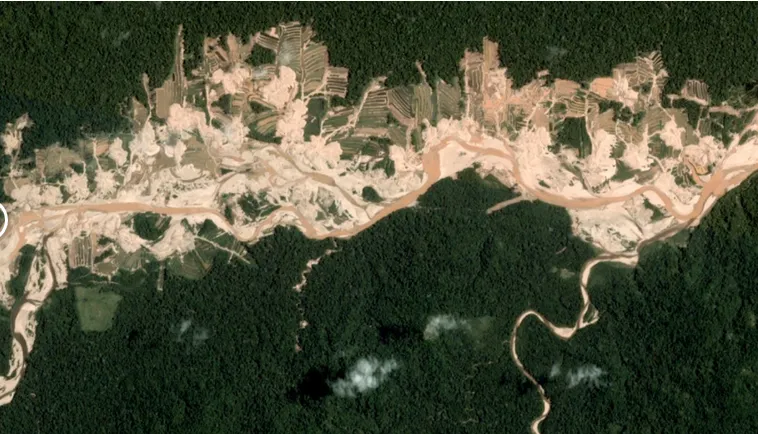
One of the tragedies of deforestation is how long it takes to re-grow a forest. But conservationists have a new method of re-planting trees that is much more efficient. This process doesn’t make trees grow more quickly and it certainly provides no justification for clearcutting virgin forest in the first place. But since this process vastly improves the survival rate of the trees and plants, it enables more forest to be regrown for a given amount of time and work.
The Muvuca Method
The new process is called muvuca (a Portuguese term that means ‘many people in a small place’). It involves planting not just one or two species, but native seeds representing a whole community of trees and plants. These can include big trees, small trees, fruit trees, bushes, berries, vines, and all manner of flora that belongs in the forests.

http://us14.campaign-archive2.com/?u=2e9f3527128e6ed6d086fc5b4&id=64400ed51b
History’s largest rainforest reforestation effort is underway right now in the Amazon. And the muvuca method is a key. Here is a short video about this effort to plant 73 million trees in Brazil.
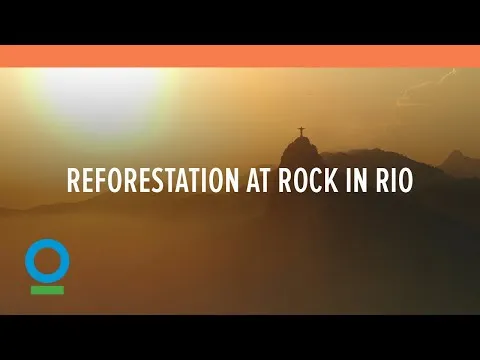
The muvuca planting method seems to crowd the trees and plants too much. Yet it emphasizes the role that each of these organisms can play, some maturing in one season before others grow tall enough to fill the space. And the Darwinian struggle for resources (light, water, soil minerals) is certainly more natural than mono-cropping one species of tree in a tract of newly planted forest. Planting close together probably keeps the soil and roots from being dried out and scorched by the sun as well. Soon enough, the air beneath the canopy becomes humid, maintaining that moisture rather than losing it to the sunlight and wind.
The following short Virtual Reality (VR) film follows a native guide in the Amazon forest. The diversity of tree and plant species is very evident from watching this. Feel free to move around by clicking and dragging as you watch; you can get a 360 degree view. Bonus points if you spot any large reptiles.
Under the Canopy (VR Film – drag the screen for a 360 degree view): 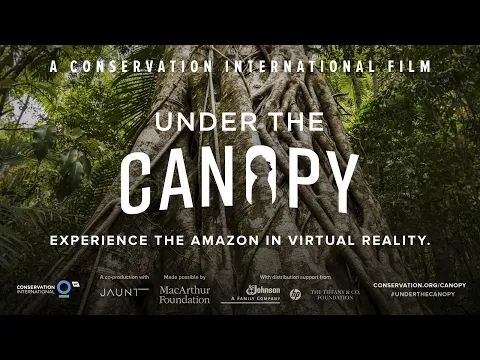
The Man Who Planted Trees
The quotes in this post come from a remarkable little book that sits on my shelf. The Man Who Planted Trees by Jean Giono is so small that it falls down frequently, not tall enough to stand for long amongst the taller books. But this little classic is a giant. It tells the fictional story of Elzeard Bouffier, a lonely shepherd who took to planting trees in the dry-windswept hills of France where the Alps meet Provence. “Nothing grew there but wild lavender,” noted the narrator.
As he tended his sheep, Bouoffier planted trees. Without a family to care for, this became his passion. It was a selfless indulgence, since he did not care for any recognition.
Over many years, Bouffier completely terraformed the land by planting and caring for his trees. The trees captured water and blocked wind; water brought other plants and animals. This richer land encouraged agriculture and vibrant villages where people started businesses, raised families, and enjoyed water fountains.
If you prefer a video, someone has turned the book and illustrations into a wonderful little movie here: 
Can this be done in real life? Oh yes. Here are two examples of modern day Elzeard Bouffiers.
One Man Plants 550 Hectares (1360 Acres) of New Trees Over 30 Years
“When I reflect that one man, armed only with his own physical and moral resources, was able to cause this land of Canaan to spring from the wasteland, I am convinced that in spite of everything, humanity is admirable.” – Jean Giono, The Man Who Planted Trees (L’homme qui plaintait des arbres)
Jadav “Molai” Payeng has planted a lot of trees in Assam, India. He became worried about the plight of the land after a flood brought some snakes downriver and many of them died in an area that had no trees for shade. Payeng began planting bamboo, which created new habitat there. He then worked with the government on tree planting in another area nearby. Once the program ended and other planters left, he kept doing it on his own.
The Molai Forest, which is named after him, now covers 550 hectares (1360 acres) adjacent to the Brahmaputra River. He has planted and maintained nearly all of the trees there by himself over a span of 30 years. The forest has become so rich in life that it is now a protected reserve which is home to Bengal tigers, elephants, Indian rhinoceros, and a great deal of other wildlife.
Here is a short video on Molai. 
Re-“foresting” with Native Grasses
“As the water reappeared, so there reappeared willows, rushes, meadows, gardens, flowers, and a certain purpose in being alive.” – Jean Giono, The Man Who Planted Trees (L’homme qui plaintait des arbres)
In some cases, it’s not trees that are needed, but other native plants. David Bamberger made a fortune selling fried chicken in the U.S. and he used it to buy the worst piece of land he could find. It was overgrazed farmland in the Texas hill country. He has spent the last five decades cleaning it up and revitalizing the land.
The secret there was native grass plants. When he first bought the property, rain would come and the water would run off, not soaking into the ground. But Bamberger’s native grasses trap the water, which runs down their long roots. They introduce more organic matter into the ecosystem there and they prevent the ground from drying out.
Within a short time, the underground water table rose higher again, and natural springs appeared on the property. Now ponds on the property host lots of wildlife and other plant species. It has become a verdant and thriving ecosystem once again, thanks to Bamberger’s care and restoration of native plants.
Here is a wonderful short video showing Bamberger’s legacy. 
In closing, let me say that these people are my heroes. I cannot imagine any higher calling than restoring the earth using trees and plants that are native to the region. It is long, tedious work that requires a big vision. These people have not sought glory and, like the fictional Elzeard Bouffier, they are quite content with the rewards of their work. Future generations may never know their names, but their enjoyment of nature will be gratitude enough. Let's hope we can maintain it and encourage a lot more people to keep planting.
Sources:
Largest Tropical Rainforest Reforestation Effort: https://www.fastcompany.com/40481305/the-largest-ever-tropical-reforestation-is-planting-73-million-trees
Muvuca Method: http://us14.campaign-archive2.com/?u=2e9f3527128e6ed6d086fc5b4&id=64400ed51b
Some Facts and Photos on Amazon Deforestation: http://www.onegreenplanet.org/environment/meat-burgers-amazon-rainforest/
Jadav “Molai” Payeng: https://en.wikipedia.org/wiki/Jadav_Payeng
Devastating Impact of Mining: http://www.cnn.com/2017/11/10/world/wonder-list-bill-weir-peru-amazon-illegal-gold-mining/index.html
The Man Who Planted Trees. There are many different editions of this wonderful book. Here is one: https://www.amazon.com/Man-Who-Planted-Trees/dp/1933392819
The Man Who Planted Trees (plant sculpture) at the Montreal Botanical Garden:
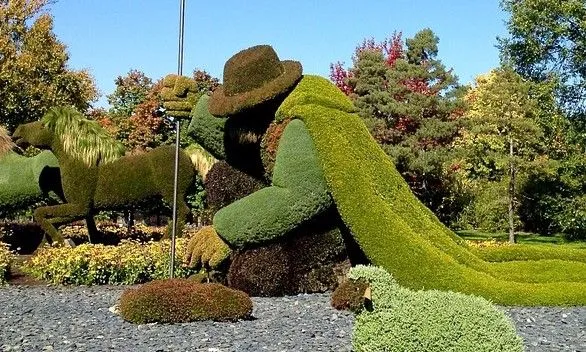
Planting in Haiti (Food Not Bombs):
